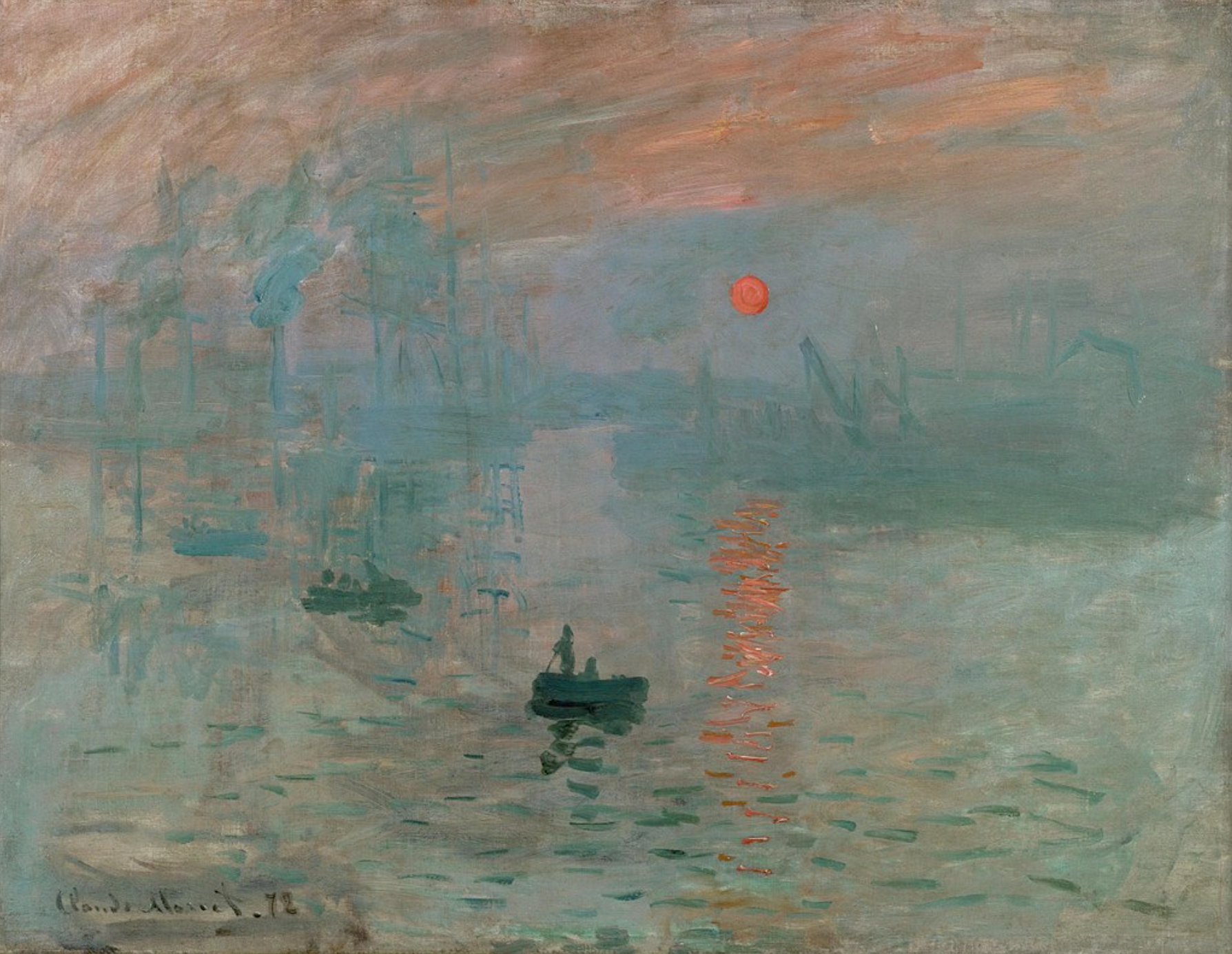
Impression, Sunrise is the masterpiece that gave the Impressionism movement its name, although it might have taken Claude Monet only a matter of hours to paint
In the foreground which takes up half of the canvas, we see a vast span of blue-pink water rendered in broad strokes, as well as wavelets in the form of horizontal patches of light blue. In the background are silhouettes of dock cranes, big sailboats and factory chimneys
3 elements capture the attention. The rising sun, in orange, the most brightly coloured object in the painting; and yet its intensity is only moderate. The similarly orange shimmering reflection of the sun upon the water. And finally, the 2 fishboats which are lit from behind, in black silhouettes like those of shadow puppets
Several themes here are characteristic of Monet: the illustration of industrial development in 19th century France, the treatment of water and its reflection of light, and the placement of human forms within a landscape. But above all, this painting showcases Monet’s fascination: the capturing of an instant
Monet later told a journalist of Revue Illustrée: The landscape is only an impression, and instantaneous …… I sent something created at Le Havre, from my window, of the sun in the mist and in the foreground several ship masts. They asked me for the title in the catalogue; that cannot pass for a view of Le Havre, I responded: “Put Impression”
In the morning of October 28, 1985, 5 gunmen burst into the Musée Marmottan, where the painting was exhibited. They took 8 security guards and about 30 visitors in hostage, and snatched the Impression, Sunrise, together with 8 other Impressionist works. According to the museum, the paintings were not insured because of the astronomical insurance premiums and because they were considered unsellable
After more than 5 years of investigation, the paintings were recovered in 1991 in a Corsican villa. A trip to Japan by the French police for the case of another art theft led them to a Japanese collector who had been considering the purchase of one of the 9 lost pieces from Marmottan. Additional information was obtained through contacts with Japanese gangsters that led to the eventual recovery of the Impression, Sunrise
